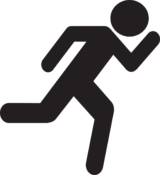How to Use Visualization Techniques for Injury Recovery
Recovering from an injury can be a long and arduous journey. What if you could harness the power of your mind to speed up the process? Visualization techniques are a powerful tool that can complement physical rehabilitation. Let’s dive into how you can incorporate these mental exercises into your recovery routine. 🧠✨
Table of Contents
1. Understanding Visualization
2. Benefits of Visualization in Injury Recovery
3. How to Practice Visualization Techniques
4. Combining Visualization with Physical Rehabilitation
5. Conclusion
6. FAQs
Understanding Visualization
Visualization is more than just a mental exercise; it’s a powerful cognitive tool. It involves creating vivid images in your mind, engaging all your senses to imagine a desired outcome. Whether you’re an athlete sidelined by an injury or someone recovering from an accident, visualization can help bridge the gap between where you are and where you want to be in your recovery journey.
Benefits of Visualization in Injury Recovery 🌟
Visualization can work wonders for injury recovery, offering several key benefits:
1. Pain Management: Imagining your body in a relaxed state can help alleviate pain. Studies show that visualization can help reduce the perception of pain by redirecting the focus from discomfort to healing.
2. Faster Recovery: Many athletes use visualization to mentally rehearse movements, which can actually enhance muscle memory and aid physical rehabilitation.
3. Boosted Confidence: Imagining yourself successfully completing physical tasks can boost confidence and motivation, crucial elements in staying committed to rehabilitation.
How to Practice Visualization Techniques 🧘♀️
Ready to give visualization a try? Here’s how you can start:
1. Find a Quiet Space: Choose a calm, comfortable environment where you won’t be disturbed. This helps in focusing your mind without distractions.
2. Set a Clear Intention: Decide what you want to achieve with your visualization—be it reducing pain, improving mobility, or simply feeling more at ease.
3. Engage All Senses: Visualize the healing process in detail. Picture the muscles repairing, feel the warmth as blood circulation improves, and hear the gentle rhythm of your breath.
4. Practice Regularly: Consistency is key. Dedicate a few minutes each day to visualization to make it a part of your recovery routine.
Combining Visualization with Physical Rehabilitation 🏃♂️
Visualization should complement, not replace, physical therapy. Use visualization before, during, or after physical exercises to maximize its benefits. For instance, before starting your physical therapy session, visualize yourself performing the exercises with ease and precision. This mental rehearsal can enhance your actual performance.
Conclusion
Visualization is a potent tool in the injury recovery toolkit. By regularly practicing these techniques, you can potentially shorten your recovery time, reduce pain, and maintain a positive mindset. Remember, your mind is a powerful ally in the healing process. 🌈
FAQs
1. Can visualization replace physical therapy?
No, visualization should complement physical therapy, not replace it. It enhances the benefits of physical exercises by preparing your mind and body for recovery.
2. How often should I practice visualization?
Aim for daily practice, even if it’s just a few minutes. Consistency helps reinforce the mental pathways that contribute to physical healing.
3. What if I find it hard to concentrate?
Start small. Even a minute of focused visualization can be beneficial. As you practice, your concentration will improve.
4. Can visualization help with emotional recovery?
Absolutely! Visualization can help reduce anxiety and build resilience, which are crucial for both physical and emotional recovery.
5. Is there scientific evidence supporting visualization for recovery?
Yes, numerous studies highlight the benefits of visualization in sports and rehabilitation, showcasing its effectiveness in enhancing recovery and performance.

